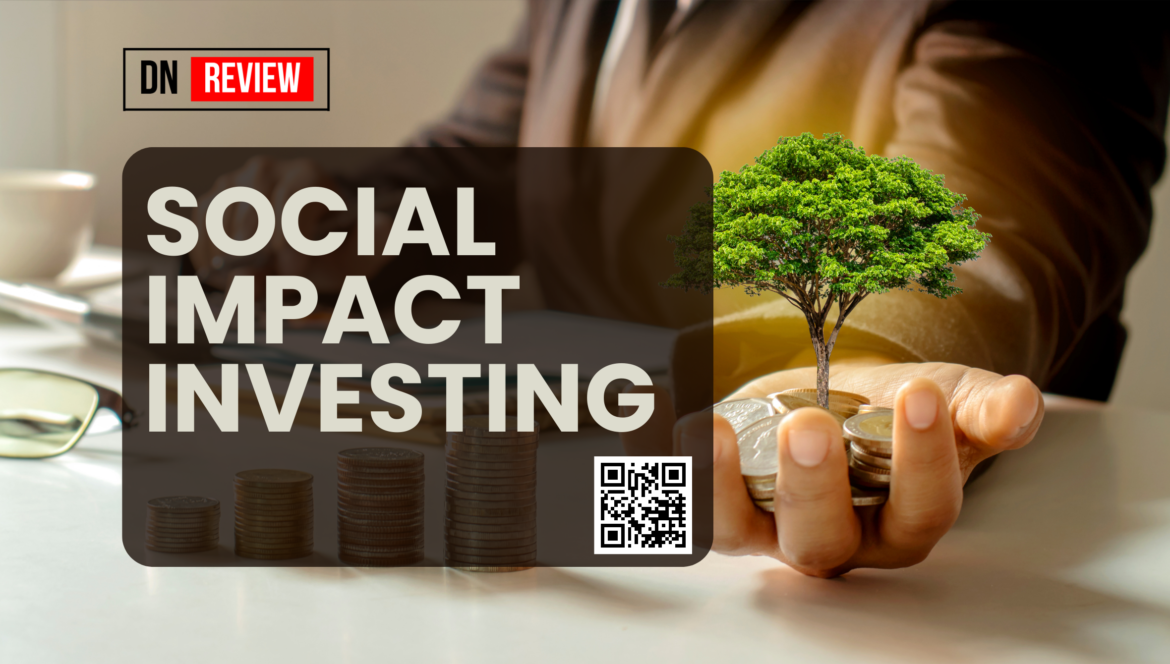Social impact investing is an investment approach that seeks to generate both financial returns and positive social or environmental impact. This form of investing goes beyond the traditional focus on financial performance and incorporates considerations related to social and environmental sustainability. The goal is to address societal challenges and contribute to positive change while still achieving competitive financial returns.
Key features of social impact investing include:
- Dual Objectives:
- Financial Returns: Social impact investments aim to generate financial returns comparable to traditional investments. This helps attract a broader range of investors, including those who may not traditionally engage in philanthropy.
- Social or Environmental Impact: The primary goal is to create positive social or environmental outcomes. Investors seek measurable and beneficial effects on issues such as poverty alleviation, healthcare, education, renewable energy, and more.
- Measurement and Evaluation:
- Social impact investors often use metrics and key performance indicators (KPIs) to assess the success of their investments in achieving social or environmental goals. This emphasis on measurement distinguishes impact investing from other forms of socially responsible investing.
- Diverse Investment Vehicles:
- Social impact investments can take various forms, including investments in social enterprises, sustainable businesses, impact funds, and projects with clear social or environmental benefits.
- Collaboration and Partnerships:
- Collaboration is a crucial aspect of social impact investing. Investors often work closely with non-profit organisations, governments, and other stakeholders to leverage collective expertise and resources.
- Risk and Return Expectations:
- Social impact investors recognise that achieving positive social outcomes may involve inherent risks. The return expectations may vary depending on the nature of the investment and the social or environmental goals it aims to address.
- Global Reach:
- Social impact investing is a global phenomenon, addressing challenges on a local, regional, and global scale. Investors may focus on issues that transcend geographic boundaries, such as climate change, human rights, and sustainable development.
- Evolution of Financial Markets:
- The field of social impact investing has contributed to the evolution of financial markets, encouraging the integration of environmental, social, and governance (ESG) factors into investment decisions. This broader consideration of impact is reshaping how investors evaluate opportunities and risks.
Social impact investing represents a growing trend as investors increasingly recognise the importance of aligning financial goals with positive societal and environmental contributions. The field continues to evolve, with ongoing discussions about standardisation, impact measurement methodologies, and the balance between financial returns and social impact.
What is an example of social impact investing?
One notable example of social impact investing is the investment in Microfinance institutions. Microfinance involves providing financial services, such as small loans, savings accounts, and insurance, to individuals in low-income or underserved communities who often lack access to traditional banking services. The goal is to empower these individuals economically and promote financial inclusion.
Example: Microfinance Investment
Investment Objective:
- The social impact objective is to alleviate poverty and support entrepreneurship in underserved communities by providing small-scale financial services to individuals who may not qualify for traditional banking services.
Investment Mechanism:
- Social impact investors may invest in Microfinance institutions (MFIs) that specialize in providing financial services to low-income individuals, particularly in developing countries. These investments could take the form of debt, equity, or a combination of both.
Financial and Social Returns:
- Investors expect financial returns through interest payments or dividends from the Microfinance institution. Simultaneously, the social return comes from the positive impact on the lives of the borrowers, who can use the financial resources to start or expand small businesses, improve their living conditions, and build financial stability.
Impact Measurement:
- The impact of the investment is measured through various metrics, such as the number of loans disbursed, the increase in income for borrowers, and improvements in education and healthcare outcomes. Social impact investors closely monitor these indicators to ensure that the investment aligns with the intended social objectives.
Partnerships and Collaboration:
- Social impact investors may collaborate with Microfinance institutions, non-governmental organisations (NGOs), and other stakeholders to enhance the effectiveness of their investments. Collaborative efforts can include providing technical assistance, training programs, and capacity building to strengthen the Microfinance ecosystem.
Risks and Challenges:
- Microfinance investments come with their own set of risks, including economic and political uncertainties in the regions where they operate. Balancing the dual objectives of financial returns and social impact requires careful risk management.
Microfinance is just one example of social impact investing. Other examples include investments in renewable energy projects, affordable housing, healthcare initiatives, and education programs. Each investment type addresses specific social or environmental challenges, and the success of these investments is often evaluated based on their ability to deliver both financial returns and positive societal outcomes.
What is a social impact investor?
A social impact investor is an individual, organisation, or institution that seeks to generate positive social or environmental impact alongside financial returns through its investments. Social impact investors deploy capital with the intention of addressing societal challenges, contributing to positive change, and promoting sustainable development. These investors are motivated by a desire to make a meaningful difference in areas such as poverty alleviation, environmental conservation, healthcare, education, and more.
Here are key characteristics and aspects associated with social impact investors:
Dual Objectives:
- Social impact investors have dual objectives, aiming to achieve both financial returns and measurable positive social or environmental outcomes. They seek to align their investment portfolios with their values and contribute to solutions for pressing global issues.
Range of Investors:
- Social impact investors can include a diverse range of entities, such as individuals, foundations, family offices, impact funds, development finance institutions, and even mainstream financial institutions. The landscape has expanded to include a variety of actors with different risk tolerances and return expectations.
Investment Sectors:
- Social impact investors invest in various sectors, depending on their priorities and areas of interest. Common sectors include clean energy, microfinance, affordable housing, education technology, sustainable agriculture, and healthcare.
Measurement and Evaluation:
- Measurement and evaluation of social impact are integral to the philosophy of social impact investing. Investors use metrics, key performance indicators (KPIs), and impact assessment tools to assess and track the social or environmental impact of their investments.
Collaboration and Engagement:
- Social impact investors often engage in collaboration with other investors, non-profit organisations, government entities, and other stakeholders. Collaboration helps leverage expertise, resources, and networks to maximise the effectiveness of impact initiatives.
Risk and Return Expectations:
- While financial returns are an important consideration, social impact investors may be willing to accept a certain level of risk in pursuit of their broader social or environmental goals. The balance between risk and return varies among different investors and depends on their specific impact objectives.
Evolution of Investment Practices:
- The field of social impact investing has evolved over time, with increased attention to impact measurement standards, transparency, and the integration of environmental, social, and governance (ESG) factors into investment decision-making processes.
Social impact investors play a crucial role in driving positive change by directing capital towards solutions for pressing global challenges. Their efforts contribute to the broader movement of responsible and sustainable finance, influencing both the financial markets and the wider business community to consider social and environmental factors in decision-making.
DN Review

